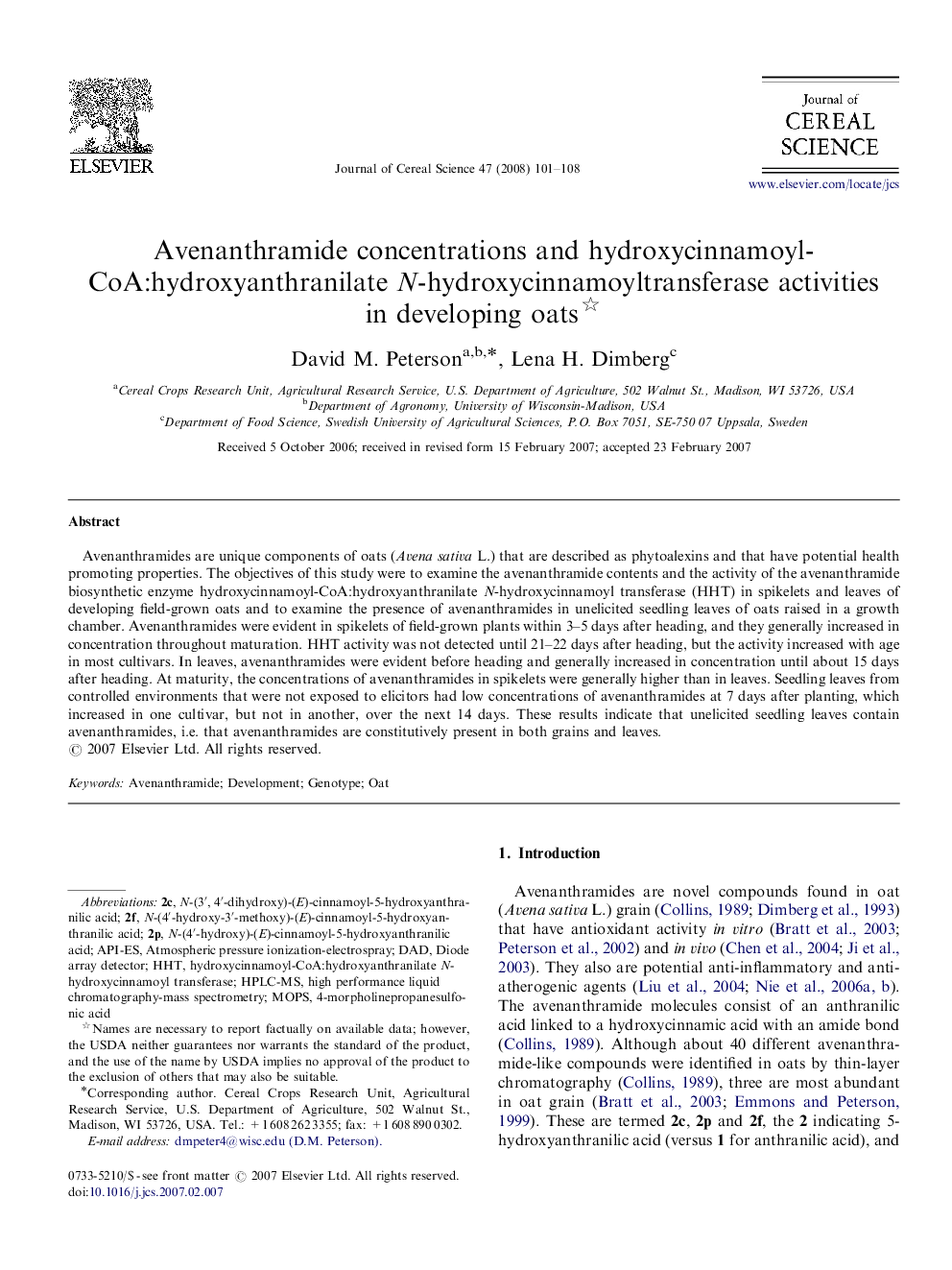| Article ID | Journal | Published Year | Pages | File Type |
|---|---|---|---|---|
| 4516557 | Journal of Cereal Science | 2008 | 8 Pages |
Avenanthramides are unique components of oats (Avena sativa L.) that are described as phytoalexins and that have potential health promoting properties. The objectives of this study were to examine the avenanthramide contents and the activity of the avenanthramide biosynthetic enzyme hydroxycinnamoyl-CoA:hydroxyanthranilate N-hydroxycinnamoyl transferase (HHT) in spikelets and leaves of developing field-grown oats and to examine the presence of avenanthramides in unelicited seedling leaves of oats raised in a growth chamber. Avenanthramides were evident in spikelets of field-grown plants within 3–5 days after heading, and they generally increased in concentration throughout maturation. HHT activity was not detected until 21–22 days after heading, but the activity increased with age in most cultivars. In leaves, avenanthramides were evident before heading and generally increased in concentration until about 15 days after heading. At maturity, the concentrations of avenanthramides in spikelets were generally higher than in leaves. Seedling leaves from controlled environments that were not exposed to elicitors had low concentrations of avenanthramides at 7 days after planting, which increased in one cultivar, but not in another, over the next 14 days. These results indicate that unelicited seedling leaves contain avenanthramides, i.e. that avenanthramides are constitutively present in both grains and leaves.
